2 MODULE 3
Plants
WITH SPOTLIGHT LESSONS ON Living Things and Their Environments
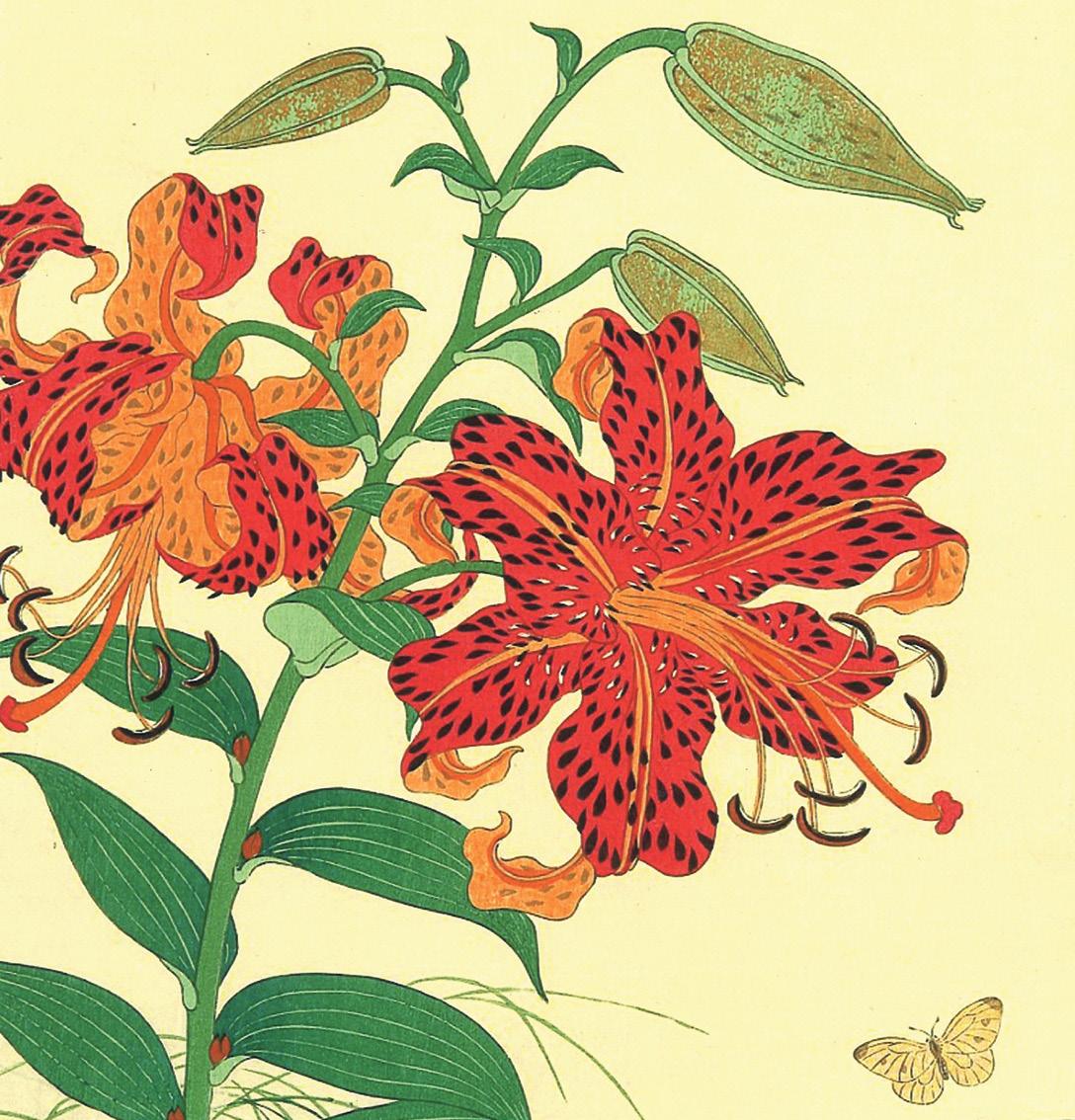
TEXAS
SCIENCE LOGBOOK LE VEL
Level 2 Module 3: Plants
WITH SPOTLIGHT LESSONS ON Living Things and Their Environments
Science Logbook
Student Name:

TEXAS
Great Minds® is the creator of Eureka Math® , Eureka Math2® , Wit & Wisdom®, and PhD Science®
Published by Great Minds PBC greatminds.org

© 2024 Great Minds PBC. Except where otherwise noted, this content is published under a limited public license with the Texas Education Agency. Use limited to noncommercial educational purposes. Where indicated, teachers may copy pages for use by students in their classrooms. For more information, visit https://gm.greatminds.org/texas. Printed
ISBN 979-8-88588-541-6
in the USA A-Print 1 2 3 4 5 6 7 8 9 10 XXX 28 27 26 25 24
© Great Minds PBC iii LEVEL 2 MODULE 3 Contents Plants Lesson 1 Activity Guide: Draw a Model 3 ������������������������������������� Lesson 2 Activity Guide: Label a Plant Diagram 5 �������������������������� Lesson 3 Activity Guide: Compare Pictures 7 �������������������������������� Lesson 4 Activity Guide A: Plan a Plant Investigation 9 ������������������� Lesson 4 Activity Guide B: Read the Procedure 11 �������������������������� Lesson 6 Activity Guide: Record Plant Data 13 ������������������������������ Lesson 8 Activity Guide: Analyze Blueberry Plant Data 17 ���������������� Lesson 11 Activity Guide: Describe Pollination 19 �������������������������� Lesson 14 Activity Guide A: Engineering Design Process 21 ������������� Lesson 14 Activity Guide B: Engineering Challenge 23 �������������������� Lesson 19 Activity Guide: Draw a Model 35 �����������������������������������
iv Level 2 ▸ Plants | Living Things and Their Environments ▸ Contents PhD SCIENCE® TEXAS Lesson 20 Activity Guide: Observe Data 37 ����������������������������������� Lesson 21 Activity Guide: Create a Food Chain 39 ��������������������������� Lesson 22 Activity Guide: Make a Claim 41 ����������������������������������� Lesson 23 Activity Guide: Observe Properties of Fruits 43 ��������������� Lesson 27 Activity Guide: Compare Plants 45 �������������������������������� Living Things and Their Environments Lesson 1 Activity Guide: Graph Weather Data 49 ��������������������������� Lesson 2 Activity Guide: Observe a Floodplain Map 53 �������������������� Lesson 3 Activity Guide A: Notice and Wonder 55 ��������������������������� Lesson 3 Activity Guide B: Label Bird Drawings 57 ������������������������ Lesson 3 Activity Guide C: Visit Bird Stations 61 ���������������������������� Lesson 4 Activity Guide: Visit Animal Stations 63 ��������������������������� Lesson 5 Activity Guide: Create a Butterfly Life Cycle Model 67 �������� Lesson 6 Activity Guide: Compare Life Cycle Needs 69 �������������������� Lesson 7 Activity Guide: Describe Group Behavior 73 ��������������������� © Great Minds PBC
Plants
TEXAS
Name: LESSON 1 ACTIVITY GUIDE
Draw a Model
Draw and label the area around Mount St. Helens.
Before Eruption
PhD SCIENCE® TEXAS Level 2 ▸ Plants ▸ Lesson 1 ▸ Activity Guide © Great Minds PBC 3
Right After Eruption
Years After Eruption
Level 2 ▸ Plants ▸ Lesson 1 ▸ Activity Guide PhD SCIENCE® TEXAS © Great Minds PBC 4
Name: LESSON 2 ACTIVITY GUIDE
Label a Plant Diagram
Label each plant part by using a word below.
Leaf Stem Root
Draw lines to match the plant part to its job.
Leaf Takes in water
Stem Takes in light
Root Moves water
PhD SCIENCE® TEXAS Level 2 ▸ Plants ▸ Lesson 2 ▸ Activity Guide © Great Minds PBC 5
Name: LES SON 3 ACTIVITY GUIDE
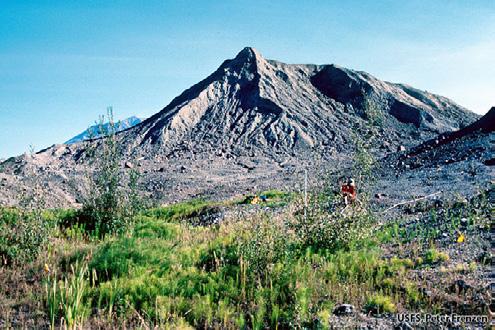
What is the same about the pictures?
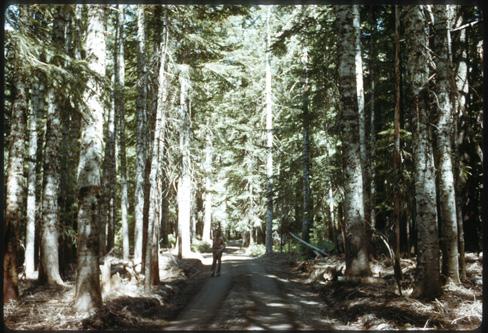
PhD SCIENCE® TEXAS Level 2 ▸ Plants ▸ Lesson 3 ▸ Activity Guide © Great Minds PBC 7
Before the Eruption
Years After
Compare Pictures
Nine
the Eruption Complete the charts.
What is different about the pictures?
Before the Eruption
Nine Years After the Eruption
Level 2 ▸ Plants ▸ Lesson 3 ▸ Activity Guide PhD SCIENCE® TEXAS © Great Minds PBC 8
Name: LESSON 4 ACTIVITY GUIDE A
Plan a Plant Investigation
Write your group’s plant and resource.
Plant: Resource: Write your group’s investigation question.
Write your group’s answer to the investigation question.
PhD SCIENCE® TEXAS Level 2 ▸ Plants ▸ Lesson 4 ▸ Activity Guide A © Great Minds PBC 9
Name: LESSON 4 ACTIVITY GUIDE B
Read the Procedure
1. Put the soil into a cup.
2. Put the seeds into the soil.
3. Put the cups into the boxes.
4. Turn on the grow lamp.
What information do you need to complete the procedure?
PhD SCIENCE® TEXAS Level 2 ▸ Plants ▸ Lesson 4 ▸ Activity Guide B © Great Minds PBC 11
Name: LESSON 6 ACTIVITY GUIDE
Record Plant Data
Circle your plant.
Fava bean plant
Radish plant
At the top of each table, circle the resource condition for your plant. Record the data for each plant in its table.
PhD SCIENCE® TEXAS Level 2 ▸ Plants ▸ Lesson 6 ▸ Activity Guide © Great Minds PBC 13
Week Height (centimeters) Number of Leaves Color Other Observations 0 1 2 3 4
No Light No Water
Little Light Little Water
Some Light Some Water
Level 2 ▸ Plants ▸ Lesson 6 ▸ Activity Guide PhD SCIENCE® TEXAS © Great Minds PBC 14
Week Height (centimeters) Number of Leaves Color Other Observations 0 1 2 3 4
Week Height (centimeters) Number of Leaves Color Other Observations 0 1 2 3 4
Lots of Light Lots of Water
PhD SCIENCE® TEXAS Level 2 ▸ Plants ▸ Lesson 6 ▸ Activity Guide © Great Minds PBC 15
Week Height (centimeters) Number of Leaves Color Other Observations 0 1 2 3 4
Name:
LESSON 8 ACTIVITY GUIDE
Analyze Blueberry Plant Data
Observe the graph. Add labels. Number of Blueberries in Each Testing Group
PhD SCIENCE® TEXAS Level 2 ▸ Plants ▸ Lesson 8 ▸ Activity Guide © Great Minds PBC 17
10 20 30 40 50 60 70 80 90 100 110 120 130 140 150 160 170 180 190 200 Number of
0
Blueberries
Group A Group B
Name: LESSON 11 ACTIVITY GUIDE
Describe Pollination


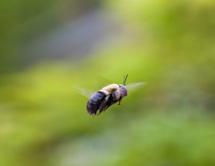


Write what is happening in each picture of the pollination model.
Picture Description
PhD SCIENCE® TEXAS Level 2 ▸ Plants ▸ Lesson 11 ▸ Activity Guide © Great Minds PBC 19
14 ACTIVITY GUIDE A
PhD SCIENCE® TEXAS Level 2 ▸ Plants ▸ Lesson 14 ▸ Activity Guide A © Great Minds PBC 21
Engineering
Process Improve Imagine Plan Create Ask Share
Name:
LESSON
Design
Name:
LESSON 14 ACTIVITY GUIDE B
Engineering Challenge
Ask Define the problem.
What is the problem?
What is the solution?
How will we know if the solution works?
PhD SCIENCE® TEXAS Level 2 ▸ Plants ▸ Lesson 14 ▸ Activity Guide B © Great Minds PBC 23
Imagine
Record information about the materials.
Material
Did pollen stick to the material?
Did pollen fall off during the move?
How much pollen is on the square?
Felt
Foam block
Coffee filter
Loop strip
Chenille stem
Pom-pom Use the pictures to determine how much pollen is on the square.
Pollen Transfer
None Little Some Lots
Level 2 ▸ Plants ▸ Lesson 14 ▸ Activity Guide B PhD SCIENCE® TEXAS © Great Minds PBC 24
Circle your group’s flower model. Measure and write the model’s height and width.
Flower Model
Narrow Wide
Height (centimeters)
Width (centimeters)
Measure and write the length and width of the materials.
Material
Cake pop stick
Coffee stirrer
Craft stick
Length (centimeters) Width (centimeters)
PhD SCIENCE® TEXAS Level 2 ▸ Plants ▸ Lesson 14 ▸ Activity Guide B © Great Minds PBC 25
Plan
Draw your group’s pollination tool. Label the materials. Include measurements.
Level 2 ▸ Plants ▸ Lesson 14 ▸ Activity Guide B PhD SCIENCE® TEXAS © Great Minds PBC 26
Which materials did you choose?
How will these materials work to transfer pollen?
PhD SCIENCE® TEXAS Level 2 ▸ Plants ▸ Lesson 14 ▸ Activity Guide B © Great Minds PBC 27
Record your results for the three tests. Test
Did the tool fit in the flower?
Did pollen fall off between the flowers?
How much pollen moved to the second flower? 1 2 3
Use the pictures to determine how much pollen moved to the second flower. Pollen Transfer None Little Some Lots
Level 2 ▸ Plants ▸ Lesson 14 ▸ Activity Guide B PhD SCIENCE® TEXAS © Great Minds PBC 28 Create
Does your pollination tool work?
How do you know? Write two observations.
Observation 1
Observation 2
PhD SCIENCE® TEXAS Level 2 ▸ Plants ▸ Lesson 14 ▸ Activity Guide B © Great Minds PBC 29
Level 2 ▸ Plants ▸ Lesson 14 ▸ Activity Guide B PhD SCIENCE® TEXAS © Great Minds PBC 30
improve
can improve our tool by
Improve How can you
your pollination tool? We
Record the results for your second tool. Test
Did the tool fit in the flower?
Did pollen fall off between the flowers?
How much pollen moved to the second flower? 1 2 3
Use the pictures to determine how much pollen moved to the second flower.
PhD SCIENCE® TEXAS Level 2 ▸ Plants ▸ Lesson 14 ▸ Activity Guide B © Great Minds PBC 31
Transfer
Little Some
Pollen
None
Lots
Compare your second tool with your first tool. Were the results of your second tool better, worse, or the same? Explain.
Level 2 ▸ Plants ▸ Lesson 14 ▸ Activity Guide B PhD SCIENCE® TEXAS © Great Minds PBC 32
Share
Write about your pollination tool.
Future Improvement(s)
Describe your pollination tool.
PhD SCIENCE® TEXAS Level 2 ▸ Plants ▸ Lesson 14 ▸ Activity Guide B © Great Minds PBC 33
Materials Test Results
Name: LESSON 19 ACTIVITY GUIDE
Draw a Model
How do you think huckleberries travel? Draw.
Explain your model.
PhD SCIENCE® TEXAS Level 2 ▸ Plants ▸ Lesson 19 ▸ Activity Guide © Great Minds PBC 35
Name: LESSON 20 ACTIVITY GUIDE
Observe Data
Complete the sentence.
Scientists predict that as the number of droppings gets bigger, the number of huckleberry plants will get .
PhD SCIENCE® TEXAS Level 2 ▸ Plants ▸ Lesson 20 ▸ Activity Guide © Great Minds PBC 37
Number of Coyote Droppings over 20 Years Number of Huckleberry Plants in 20 Years 0 0 100 14 200 29 300 40 400 50
Read the data table below.
Name: LESSON 21 ACTIVITY GUIDE
Create a Food Chain
Use the chart to build a food chain.
Living Thing
What It Eats
Black-tailed jackrabbit Grasses, leaves, seeds
Western diamondback snake
Black-tailed jackrabbits, small snakes, birds
Grasses Makes its own food
Desert centipede Spiders, grasshoppers, frogs
Grasshopper Grasses
Write the name of a living thing on each line to create a food chain.
Under each line, write if the living thing is a producer or a consumer.
PhD SCIENCE® TEXAS Level 2 ▸ Plants ▸ Lesson 21 ▸ Activity Guide © Great Minds PBC 39
Name: LESSON 22 ACTIVITY GUIDE
Make a Claim
Observe the pictures. Record the properties of the huckleberry and the bur.
Complete the sentence to make a claim.
The will stick better to an animal because of its properties.
Which properties support the claim?
PhD SCIENCE® TEXAS Level 2 ▸ Plants ▸ Lesson 22 ▸ Activity Guide © Great Minds PBC 41
Huckleberry Bur
Name: LESSON 23 ACTIVITY GUIDE
Observe Properties of Fruits
Write the properties that help each plant’s seeds travel.
How Its Seeds
Kind of Plant
African grass Rolls
Red mangrove Plunges
Yang-na Helicopters
PhD SCIENCE® TEXAS Level 2 ▸ Plants ▸ Lesson 23 ▸ Activity Guide © Great Minds PBC 43
Travel Properties
Sticktight Hitchhikes
Name: LESSON 27 ACTIVITY GUIDE
Compare Plants
Circle the plant and resource you investigated.
Plant
Resource
Fava bean Light
Radish Water
Complete the sentence.
The plant that got had its needs met the best.
PhD SCIENCE® TEXAS Level 2 ▸ Plants ▸ Lesson 27 ▸ Activity Guide © Great Minds PBC 45
Record your evidence.
Level 2 ▸ Plants ▸ Lesson 27 ▸ Activity Guide PhD SCIENCE® TEXAS © Great Minds PBC 46
Things and Their Environments TEXAS
Living

PhD SCIENCE® TEXAS Level 2 ▸ Living Things and Their Environments ▸ Lesson 1 ▸ Activity Guide © Great Minds PBC 49
Temperature Draw and color a bar for each season. Cypress Slough Temperature Temperature (°F) Winter 90 80 70 60 50 40 30 20 10 0 SpringSummerFall
Name: LES SON 1 ACTIVITY GUIDE Graph Weather Data
Longleaf Pine Forest Temperature

Level 2 ▸ Living Things and Their Environments ▸ Lesson 1 ▸ Activity Guide PhD SCIENCE® TEXAS © Great Minds PBC 50 Temperature (°F) Winter 90 80 70 60 50 40 30 20 10 0 SpringSummerFall

PhD SCIENCE® TEXAS Level 2 ▸ Living Things and Their Environments ▸ Lesson 1 ▸ Activity Guide © Great Minds PBC 51
Cypress Slough Precipitation Precipitation (inches) Winter 9 10 8 7 6 5 4 3 2 1 0 Spring Summer Fall
Precipitation Draw and color a bar for each season.
Longleaf Pine Forest Precipitation

Level 2 ▸ Living Things and Their Environments ▸ Lesson 1 ▸ Activity Guide PhD SCIENCE® TEXAS © Great Minds PBC 52 Precipitation (inches) Winter 9 10 8 7 6 5 4 3 2 1 0 Spring Summer Fall
Name: LESSON 2 ACTIVITY GUIDE

What information do you see on the map?

PhD SCIENCE® TEXAS Level 2 ▸ Living Things and Their Environments ▸ Lesson 2 ▸ Activity Guide
Circle the locations of the cypress slough and the longleaf pine forest. Longleaf pine forest Cypress slough No foodplain Floodplain Wetlands
Observe a Floodplain Map
© Great Minds PBC 53
Name: LES SON 3 ACTIVITY GUIDE A Notice and


Wonder
Observe the pictures. Complete the chart. I Notice
PhD SCIENCE® TEXAS Level 2 ▸ Living Things and Their Environments ▸ Lesson 3 ▸ Activity Guide A © Great Minds PBC 55
I Wonder
Name: LESSON 3 ACTIVITY GUIDE B

Label Bird Drawings
Great Blue Heron
Write labels that describe the body parts of the heron.
PhD SCIENCE® TEXAS Level 2 ▸ Living Things and Their Environments ▸ Lesson 3 ▸ Activity Guide B © Great Minds PBC 57
Red-Cockaded Woodpecker
Write labels that describe the body parts of the woodpecker.

Level 2 ▸ Living Things and Their Environments ▸ Lesson 3 ▸ Activity Guide B PhD SCIENCE® TEXAS © Great Minds PBC 58
How does the heron get food?

How does the woodpecker get food?

PhD SCIENCE® TEXAS Level 2 ▸ Living Things and Their Environments ▸ Lesson 3 ▸ Activity Guide B © Great Minds PBC 59
Name: LESSON 3 ACTIVITY GUIDE C
Visit Bird Stations
Great Blue Heron Station
1. Observe the picture.
2. Watch the video.
3. Write what you observe.
PhD SCIENCE® TEXAS Level 2 ▸ Living Things and Their Environments ▸ Lesson 3 ▸ Activity Guide C © Great Minds PBC 61
Observations
Need
Food
Red-Cockaded Woodpecker Station
1. Observe the picture.
2. Watch the video.
3. Write what you observe.
Level 2 ▸ Living Things and Their Environments ▸ Lesson 3 ▸ Activity Guide C PhD SCIENCE® TEXAS © Great Minds PBC 62
Observations Food
Need
Name: LESSON 4 ACTIVITY GUIDE
Visit Animal Stations
Complete the charts.
Food Station
Animal Observations
How does the animal get food? Circle.
Wiggles tongue to attract food
Alligator snapping turtle

Uses claws to pull food to its mouth
Wiggles tongue to attract food
Uses claws to pull food to its mouth
Striped skunk

PhD SCIENCE® TEXAS Level 2 ▸ Living Things and Their Environments ▸ Lesson 4 ▸ Activity Guide © Great Minds PBC 63
Water Station
Animal Observations
How does the animal get water? Circle.
Bends low to drink water
Eastern gray squirrel
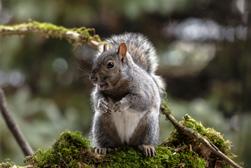
American crow

Tips head up to drink water
Bends low to drink water
Tips head up to drink water
Level 2 ▸ Living Things and Their Environments ▸ Lesson 4 ▸ Activity Guide PhD SCIENCE® TEXAS © Great Minds PBC 64
Air Station
Animal Obser vations
How does the animal get air? Circle.
American alligator
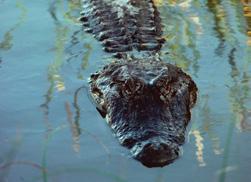
Bobcat
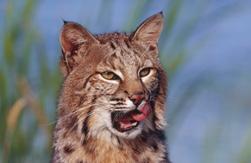
Lifts snout out of water to breathe Uses nostrils to breathe
Lifts snout out of water to breathe Uses nostrils to breathe
PhD SCIENCE® TEXAS Level 2 ▸ Living Things and Their Environments ▸ Lesson 4 ▸ Activity Guide © Great Minds PBC 65
Name: LES SON 5 ACTIVITY GUIDE
Create a Butterfly Life Cycle Model
1. Glue the life cycle cards in order. Draw arrows.
2. Label each life cycle stage. Describe what happens between the stages.
PhD SCIENCE® TEXAS Level 2 ▸ Living Things and Their Environments ▸ Lesson 5 ▸ Activity Guide © Great Minds PBC 67
Name: LES SON 6 ACTIVITY GUIDE
Compare Life Cycle Needs
American Bullfrog Station
Complete the chart. Write observations about body parts and behaviors.
How are the tadpole and adult bullfrog similar?
How are the tadpole and adult bullfrog different?
Tadpole Adult Bullfrog
PhD SCIENCE® TEXAS Level 2 ▸ Living Things and Their Environments ▸ Lesson 6 ▸ Activity Guide © Great Minds PBC 69
Gulf Fritillary Butterfly Station
Complete the chart. Write observations about body parts and behaviors.
How are the caterpillar and adult butterfly similar?
How are the caterpillar and adult butterfly different?
Caterpillar
Adult Butterfly
Level 2 ▸ Living Things and Their Environments ▸ Lesson 6 ▸ Activity Guide PhD SCIENCE® TEXAS © Great Minds PBC 70
How do tadpoles and adult bullfrogs meet their needs?

How do caterpillars and adult butterflies meet their needs?

PhD SCIENCE® TEXAS Level 2 ▸ Living Things and Their Environments ▸ Lesson 6 ▸ Activity Guide © Great Minds PBC 71
Name: LESSON 7 ACTIVITY GUIDE
Describe Group Behavior



How did your group model the leafcutting ants?
How did your group model the white-tailed deer?
How did your group model the honey bees?
PhD SCIENCE® TEXAS Level 2 ▸ Living Things and Their Environments ▸ Lesson 7 ▸ Activity Guide 73
© Great Minds PBC
Bibliography
Plants
Campbell, J. W., J. O’Brien, J. H. Irvin, C. B. Kimmel, J. C. Daniels, and J. D. Ellis. 2017. “Managed Bumble Bees (Bombus impatiens) (Hymenoptera: Apidae) Caged with Blueberry Bushes at High Density Did Not Increase Fruit Set or Fruit Weight Compared to Open Pollination.” Environmental Entomology 46, no. 2 (April): 237–242. https://doi.org/10.1093/ee/nvx044.
Yang, Suann, Eelke Jongejans, Sylvia Yang, and John G. Bishop. 2011. “The Effect of Consumers and Mutualists of Vaccinium membranaceum at Mount St. Helens: Dependence on Successional Context.” PLoS ONE 6, no. 10 (October). https://doi.org/10.1371/journal.pone.0026094
© Great Minds PBC 75
Bibliography Credits
Great Minds® has made every effort to obtain permission for the reprinting of all copyrighted material. If any owner of copyrighted material is not acknowledged herein, please contact Great Minds for proper acknowledgment in all future editions and reprints of this logbook.
Plants
Page 7 (left), Donald Lawrence/University of Minnesota, (right), U.S. Geological Survey; page 19 (from top), Brigitte Blättler/Moment Open/Getty Images, Protasov AN/Shutterstock.com, Kathy Clark/Shutterstock.com, Betty Shelton/Shutterstock.com, Andris Tkacenko/Shutterstock.com
All other images are the property of Great Minds.
Living Things and Their Environments
Page 55 (left), JackBulmer/Pixabay, (right), Jeffrey Lepore/Science Source; page 63 (top), Karl H. Switak/Science Source, (bottom), DejaVuDesigns/Shutterstock.com; page 64 (top), Karel Bock/Shutterstock.com, (bottom), Jim Zipp/ Science Source; page 65 (top), (bottom), Jeffrey Lepore/Science Source
All other images are the property of Great Minds.
© Great Minds PBC 76
Acknowledgments
Great Minds® Staff
The following writers, editors, reviewers, and support staff contributed to the development of this curriculum:
Amanda Abbood, Nashrah Ahmed, Maria Albina, Ana Alvarez, Lindsay Arensbak, Lynne Askin-Roush, Marissa Axtell, Brian Aycock, Keith Bannister, Nina Barcelli, Trevor Barnes, John Barnett, Greg Bartus, Michele Baskin, Koi Beard, Tocarra Bell, Brianna Bemel, Kerry Benson, Sanobar Bhaidani, David Blair, Ranell Blue, Jennifer Bolton, Sandy Brooks, Bridget Brown, Taylor Brown, Dan Brubaker, Carolyn Buck, Sharon Buckby, Lisa Buckley, Kristan Buckman, Becky Bundy, Sarah Bushnell, Eric Canan, Adam Cardais, Crystal Cizmar, Emily Cizmas, Rolanda Clark, Elizabeth Clarkin-Breslin, Christina Cooper, Kim Cotter, Karen Covington, Gary Crespo, Madeline Cronk, Lisa Crowe, Allison Davidson, Kristin Davis, Brandon Dawson, Megan Dean, Katherine DeLong, Julie Dent, Jill Diniz, Erin Doble, Delsena Draper, Amy Dupre, Jami Duty, Jessica Dyer, Lily Eisermann, Alison Engel, Sandy Engelman, Tamara Estrada, Lindsay Farinella, De Edra Farley, Ubaldo Feliciano-Hernández, Molly Fife, Lisa Fiorilli, Soudea Forbes, Mark Foster, Richard Fox, Peter Fraser, Reba Frederics, Liz Gabbard, Diana Ghazzawi, Lisa Giddens-White, Patricia Gilbert, Ellen Goldstein, Laurie Gonsoulin, Pamela Goodner, Kristen Gray, Lorraine Griffith, Dennis Hamel, Heather Harkins, Cassie Hart, Kristen Hayes, Sarah Henchey, Marcela Hernández, Abbi Hoerst, Jessica Holman, Missy Holzer, Matthew Hoover, Robert Hunter, Jennifer Hurd, Rachel Hylton, Robert Ingram Jr., Mamie Jennings, Reagan Johnson, Yuria Joo, Marsha Kaplan, Frankie Katz, Ashley Kelley, Robert Kelly, Lisa King, Suzanne Klein, Betsy Kolodziej, Sarah Kopec, Jenny Kostka, Drew Krepp, Rachel Lachiusa, Brittany Langlitz, Mike Latzke, Lori Leclair, Catherine Lee, Jennifer Leonberger, Jessica Levine, Caren Limbrick, Latoya Lindsay, Sarah Lomanno, Katherine Longo, Scott Loper, Susan Lyons, Kristi Madden, David Malone, Carolyn Mammen, Katrina Mangold, Stacie McClintock, Miranda McDaniel, Megan McKinley-Hicks, Cindy Medici, Ivonne Mercado, Sandra Mercado, Kevin Mesiar, Patty Messersmith, Brian Methe, Patricia Mickelberry, Marisa Miller, Sara Montgomery, Melissa Morgan, Mackenzie Most, Lynne Munson, Mary-Lise Nazaire, Corinne Newbegin, Darin Newton, Bekka Nolan, Tara O’Hare, Gillia Olson, Max Oosterbaan, Tamara Otto, Catherine Paladino, Meagan Palamara, Christine Palmtag, Mallory Park, Marya Parr, Joshua Paschdag, Emily Paulson, Emily Peterson, Margaret Petty, Nina Phelps, Jeffrey Plank, Judy Plazyk, Amelia Poppe, Lizette Porras, Jeanine Porzio, Jennifer Raspiller, Dan Ray, Brianna Reilly, Jocelyn Rice, Leandra Rizzo, Sally Robichaux, Cortni Robinson, Jeff Robinson, Todd Rogers, Karen Rollhauser, Allyson Romero, Angel Rosado Vega, Carol Rose, Angela Rothermel, Kim Rudolph, Megan Russo, Isabel Saraiva, Vicki Saxton, Michelle Schaut, Lauren Scheck, Gina Schenck, Stephanie Schoembs, Amy Schoon, Jesse Semeyn, Rudolph Shaffer, Khushali Shah, Nawshin Sharif,
© Great Minds PBC 77
Lawrence Shea, Aaron Shields, Cindy Shimmel, Maria Shingleton, Melissa Shofner, Erika Silva, Kerwyn Simpson, Laura Sirak-Schaeffer, Amy Snyder, Victoria Soileau, Rachel Stack, Isaac Stauffer, Leigh Sterten, Marianne Strayton, Mary Sudul, Lisa Sweeney, Elizabeth Szablya, Annie Wentz Tete, Heidi Theisen, Brian Thompson, Lauren Trahan, Olga Tuman, Kimberly Tyler, Jennifer VanDragt, Tracy Vigliotti, Freddy Wang, Lara Webb, Dave White, Charmaine Whitman, Erica Wilkins, Tiffany Williams, Erin Wilson, Mark Wise, Glenda Wisenburn-Burke, Armetta Wright, Howard Yaffe, Nazanene Yaqubie, Christina Young, Amy Zaffuto, Cat Zarate, and Suzanne Zimbler.
Colleagues and Contributors
We are grateful for the many educators, writers, and subject-matter experts who made this program possible.
Tricia Boese, Thomas Brasdefer, Andrew Chen, Arthur Eisenkraft, Pat Flanagan, Rachel Gritzer, Fran Hess, Kim Marcus, Fred Myers, Jim O’Malley, Neela Roy, Ed Six, and Larry Stowe
Level 2 ▸ Plants | Living Things and Their Environments ▸ Acknowledgments PhD SCIENCE® TEXAS 78
© Great Minds PBC
On a sunny day in 1980, a volcano erupted in Washington State. When the volcano cooled and the clouds of ash cleared, the forests had disappeared! But today the area is green again. How did life return? Solve the mystery. Do some plants need more light than others? What do animals have to do with plant growth? Explain how plants bounced back after one of the biggest eruptions in US history.
In the Spotlight: How do herons get food? How can tadpoles and frogs meet their needs? Create a bullfrog life cycle model and act like bees cooling a hive. Explore the amazing animals of Big Thicket. Along the way, ask yourself, How does my new knowledge help me understand the world?
ON THE COVER
LEVEL 2 MODULES
1 MATTER with Spotlight Lessons on Weather Events
2 SOUND with Spotlight Lessons on Objects in the Sky
3 PLANTS with Spotlight Lessons on Living Things and Their Environments
Tiger Lilies and Buterfly, 1932

Ohara Koson, Japanese, 1877–1945
Shin-hanga woodblock print
ISBN 979-8-88588-541-6
Great Minds® brings teachers and scholars together to craft exemplary instructional materials that inspire joy in teaching and learning. PhD Science®, Eureka Math®, Eureka Math2 ®, and our English curriculum Wit & Wisdom® all give teachers what they need to take students beyond rote learning to provide a deeper, more complete understanding of the sciences, mathematics, and the humanities.
TEXAS
798885 885416 A 9



















